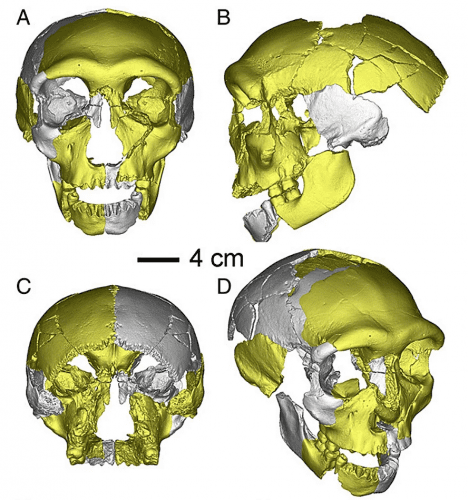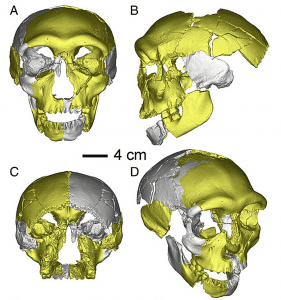英文部分:
Title: Fossils Found in China Suggest a Third Lineage of Hominids
A team of paleontologists from the Chinese Academy of Sciences, in partnership with colleagues from Xi’an Jiaotong University, the University of York in England, and the National Center for Human Evolution Research (CENIEH) in Spain, have identified a previously unknown hominid species. The discovery was made while studying 300,000-year-old fossils, suggesting the individual may have belonged to a third lineage never before recorded by science.
The fossils, which include a jawbone, part of a skull, and some leg bones, were discovered in Hualongdong, in what is now eastern China. The jawbone and partial skull form a cranium labeled as “HLD 6”. The jawbone exhibits unique features, such as a triangular lower edge and a unique curve, reminiscent of both modern humans and Upper Pleistocene hominids. However, the absence of a chin suggests that the hominid found in China was more related to ancient species.
The study concludes that the “HLD 6” skull belonged to a hominid aged 12 to 13 years old. This combination of archaic and modern human features has never been observed in ancient humans in East Asia, suggesting that characteristics found in Homo sapiens began to appear as early as 300,000 years ago.

中文部分:
标题:中国发现的化石暗示存在第三类人类
中国科学院的一组古生物学家,与西安交通大学、英格兰约克大学和西班牙人类进化研究国家中心(CENIEH)的同事合作,发现了一种以前未知的人类物种。他们在研究30万年前的化石时发现了这一点,这暗示这个个体可能属于科学以前从未记录过的第三类人类。
这些化石包括一个下颚骨、部分头骨和一些腿骨,是在现在的中国东部的化龙洞发现的。下颚骨和部分头骨形成了一个被标记为“HLD 6”的头骨。下颚骨展现出独特的特征,如三角形的下边缘和独特的曲线,让人联想到现代人和上更新世人类。然而,下巴的缺失表明在中国发现的人类更接近古老的物种。
研究得出的结论是,“HLD 6”头骨属于一个12到13岁的人类。这种古老和现代人类特征的组合在东亚的古人类中从未被观察到,这暗示在早在30万年前,Homo sapiens中就开始出现了这些特征。








